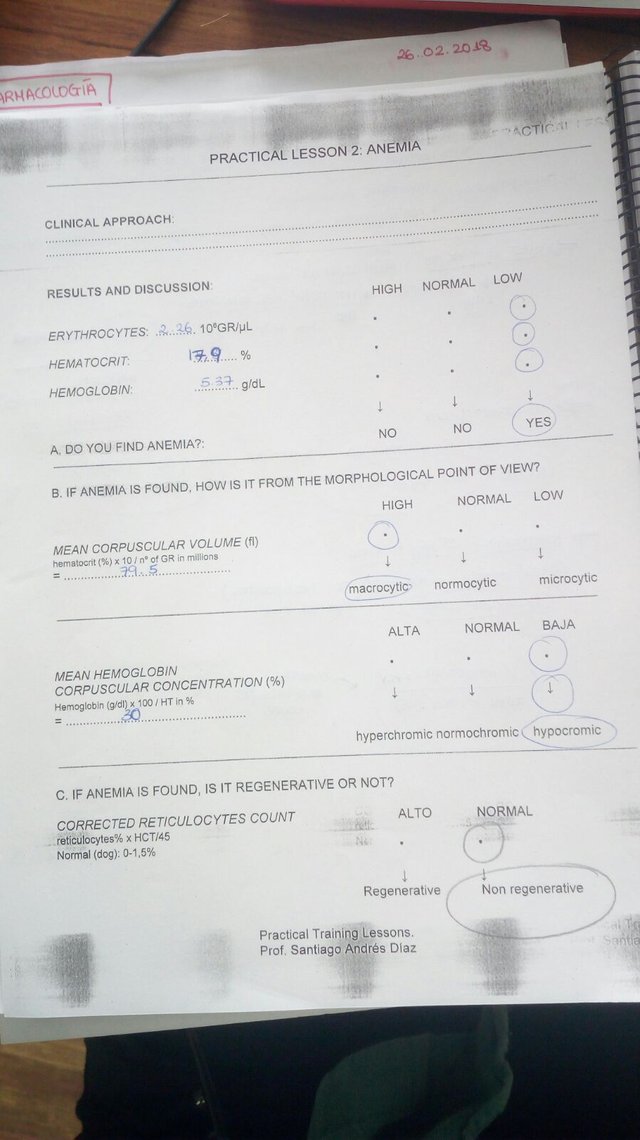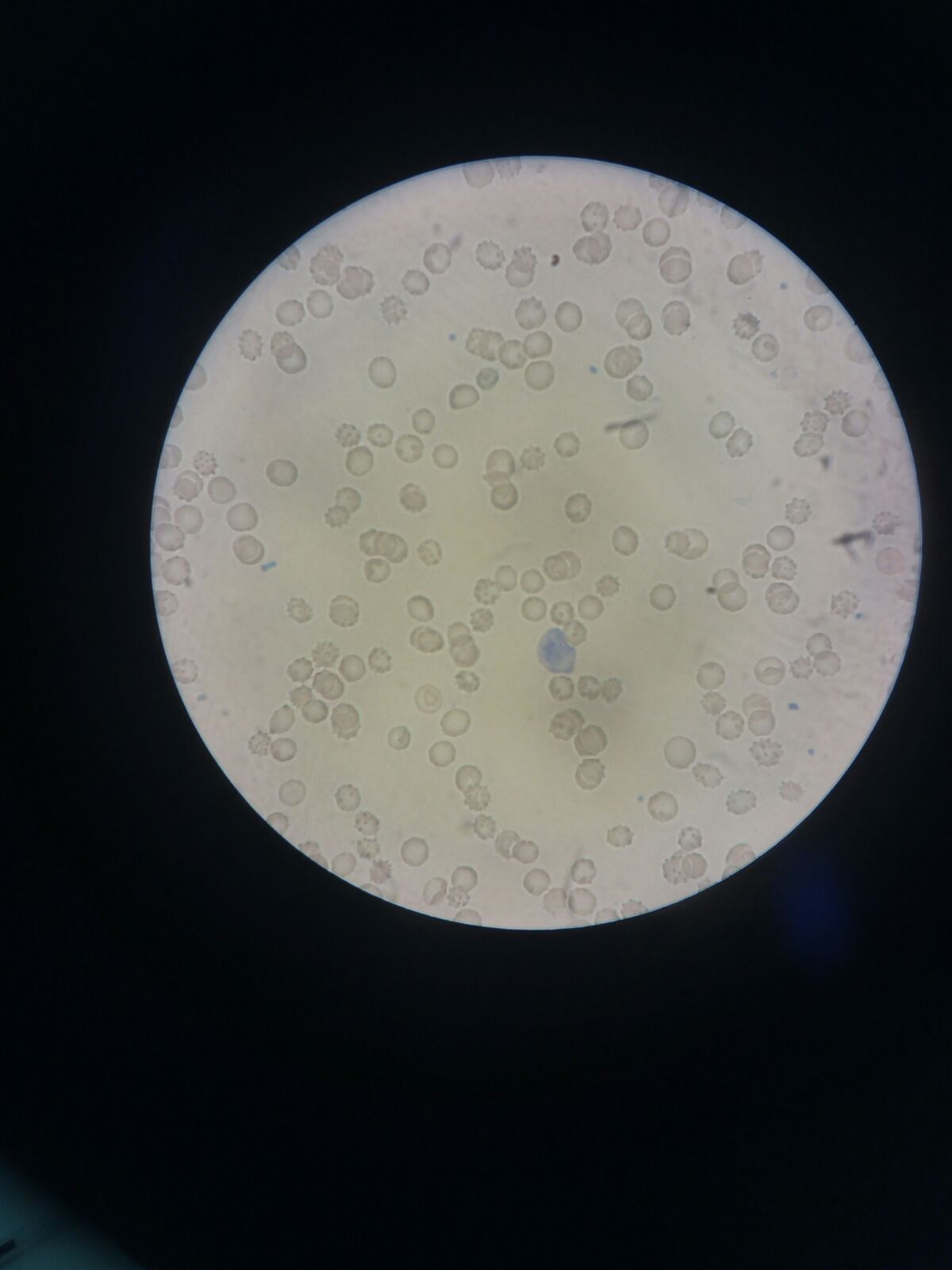PRACTICAL LESSON 2: ANEMIA
.jpeg)
WELCOME BACK TO MY BLOG!
I know I've been off these last days, but I'm I bit stessed with University and stuff.
But today I have free time, so I decided to show you guys how anemia works. This was my practical lesson from Physiopathology.
Let's get started:
Clinical approach for anemia:
- Blood loss
- Hemolysis (because of an inmune hemolitic anemia or parasites)
- Lack of production
We were given the clinical data of a patient, so that we could undestarnd the anemia concept, and get to know which type of anemia it had:
HISTORY: "Delcy" , 8 years olf female, Dalmatian.
- Acute lethargy
- Weakness
PHYSICAL EXAM:
- Generalized icterus
- pale mucous membranes
- tachycardia (less volume, less blood cells = more heart effort)
- recumbency
So, it's obvious that this poor dog has a type of anemia, but we need to do a blood test to confirm our guesses.
BLOOD CELLS COUNT (with machine)

- Taking a look to Erythrocytes, Hematocrit and Hemoglobin, it is obvious we are taking a look to anemia levels (everything is lower than it should).
- Now we know we have a real anemia, but how is it from the morphological point of view? (cell size and Hemoglobin content)
Mean Corpuscular Volume: HTx10/ nº RBC in millions --> 79,5 > than normal --> WE HAVE A MACROCYTIC ANEMIA (we have new formed erytrocytes --> this will mean that it is a regenerative anemia, but we will see it later).
Mean Corpuscular Hb Concentration: HGBx100/HT (in percentage, %)= 30 --> a bit low, HYPOCHROMIC. - If anemia is found, is it regenerative or non regenerative?
We already saw that there is formation of new erytrocytes (called Reticulocytes, know to be a bit larger), but to know if it is a Regenerative anemia or not, we need to do another calculation:
We take a blood sample (already dyed with a special dye for Reticulocytes) and we see it under the microscope with inmersion oil. We are going to try to find the retyculocytes and try to count them. Then we have to make a correction of that number eith this formula:
%retyculocytes x PVC/normal K9 PCV (45) --> if is less than 1%, it is a NON REGENERATIVE ANEMIA, because there is a normal production of new Erytrocytes.
So now we now that Delcy has an anemia which is non regenerative , with a high number of erythrocytes, but with few hemoglobin, so many of them function with a low activity. This is caused by a Canine Inmune Mediated Hemolytic Anemia.

So in this pic you can see a lot of erythrocytes. Thhe ones with dots, are old erythrocytes. The plain ones, are normal. An dthe only blue thing you see is a Retycolocyte, characterized by it's blue colour and it's size. As you can see, there are not many of these cells, so it's a non regenerative anemia.
I hope you found this information interesting!
It is always a pleassure to share the things I learn in my University.
A big hug,
@ladyclau
Hola @ladyclau, upvote! ^_^